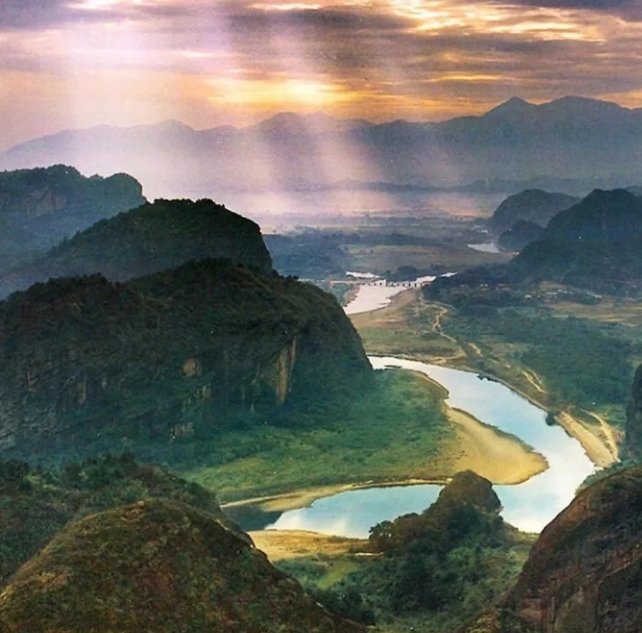Longhu Mountain, located in Guixi City under Yingtan, Jiangxi Province, features a typical Danxia landform and is known as the birthplace of Taoism, earning the title “The First Mountain of Taoism in China.” According to the “Chronicles of Longhu Mountain,” the mountain was originally named Yunjin Mountain, where the first generation of Celestial Master, Zhang Daoling, refined the Nine Heavens Divine Elixir. Upon completion, dragons and tigers appeared, leading to the mountain’s name. The main peak, Tianmen Mountain, rises to an elevation of 1,300 meters.
I. The History of Taoism at Longhu Mountain
Longhu Mountain, with its pristine waters and red mountains, is a tranquil sanctuary far from the noise of the world, making it an ideal location for Taoist alchemists and practitioners.
In the second year of the Yongyuan era of the Eastern Han Dynasty (90 AD), Zhang Daoling and his disciples Wang Chang and Zhao Sheng came to Longhu Mountain to refine the Nine Heavens Divine Elixir. They also visited the west and obtained secret texts from the Bilu Cave, spending over thirty years practicing medicine and cultivation at Longhu Mountain. In the first year of the Han An Emperor (142 AD), Zhang Daoling learned about an epidemic in Shu and went to help, establishing the “Five Pecks of Rice” sect in Mount Minghe, which later became known as the Tianshi Dao (Celestial Master Dao).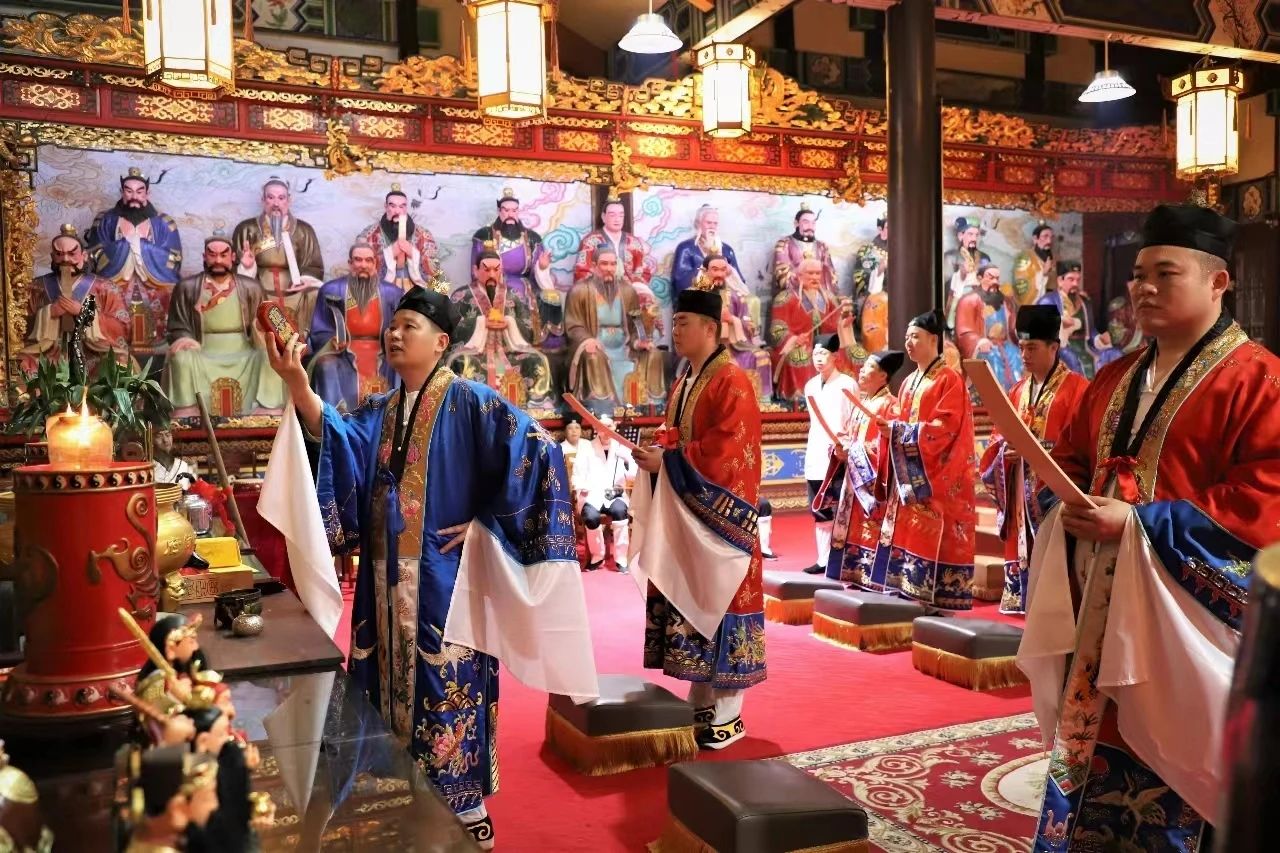
During the time of his grandson, Zhang Lu, the Tianshi Dao had established a significant presence in Dongchuan, wielding actual political power in Sichuan. This posed a threat to the political situation, leading Han Prime Minister Cao Cao to suppress the Tianshi Dao with military force. Cao Cao granted Zhang Lu the title of General of the South, treating him as a guest and bestowing upon him the title of Marquis of Langzhong with ten thousand households. Zhang Sheng, his son, refused the title and returned to Longhu Mountain with his seal, sword, scriptures, and talismans. He repaired the ancestral altar of the Celestial Master and established the Longhu sect, officially founding the Zhengyi Dao (Orthodox Unity Dao) with Zhang Daoling as the chief Celestial Master.
During the Wei, Jin, and Southern and Northern Dynasties, the Zhengyi Dao did not achieve widespread influence, especially among the elite. In response, Zhang Sheng and his descendants reformed the teachings, integrating Confucian ideals of loyalty, filial piety, benevolence, and righteousness, while incorporating Buddhist concepts of cause and effect to enrich their doctrines. They promoted the idea of “aiding the nation and benefiting the people” to seek support from rulers and gain popular acceptance, thereby expanding the societal influence of Zhengyi Dao.
This transformation marked a significant shift from folk Taoism to official Taoism, with its impact gradually becoming evident during the Sui and Tang Dynasties.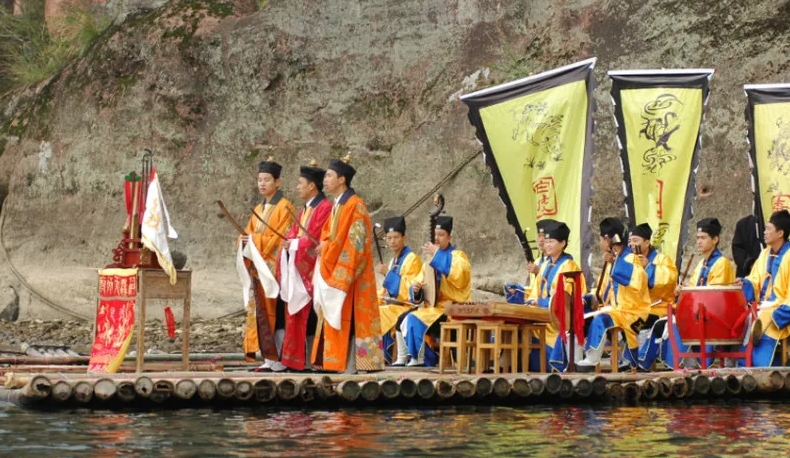
Yang Jian, the founder of the Sui Dynasty, was fascinated by Taoism and named his era “Kaihuang,” a title derived from Taoist texts, symbolizing the opening of cosmic cycles. The Sui Dynasty emperors and later the Tang emperors embraced Taoism, claiming descent from Laozi and establishing Taoism’s “royal lineage.” In the second year of the Qianfeng era (667 AD), Emperor Gaozong posthumously honored Laozi as the Supreme Mysterious Emperor, and during the fifth year of the Xianheng era (674 AD), he made the “Tao Te Ching” a subject for civil service examinations. In the first year of the Shenlong era (705 AD), he ordered scholars across the land to study the “Tao Te Ching.” During the twenty-first year of the Kaiyuan era (731 AD), he commanded households to possess a copy of the text, and candidates were tested on it, with imperial annotations circulated nationwide.
The Tang Dynasty used the elevation of Taoism to maintain its rule, and Longhu Mountain’s Zhengyi Dao gradually received state support. During the reign of Emperor Xuanzong, the court highly regarded the Celestial Master. In the seventh year of the Tianshu era (748 AD), Emperor Xuanzong personally bestowed a letter to the fifteenth generation Celestial Master, Zhang Gaoshou, praising the master and granting privileges for ceremonies, waiving taxes, and establishing a school for bestowing talismans in the capital. Emperor Xuanzong also conferred the title of “Taishi” on Zhang Daoling, lauding him as a true immortal and acknowledging his contributions to Taoism.
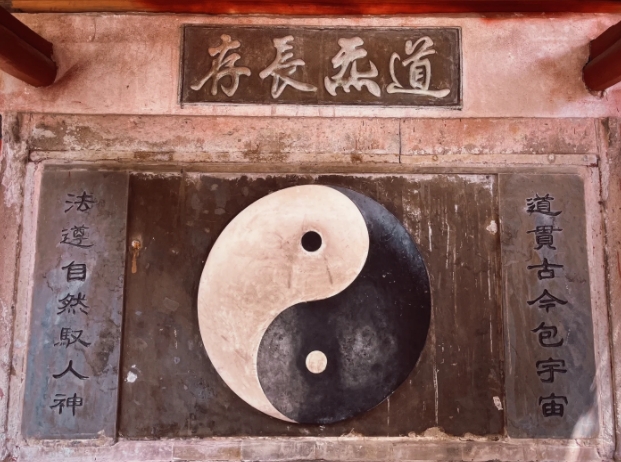
Subsequent emperors continued this patronage, with Emperor Suzong hosting ceremonies at Longhu Mountain. The twentieth generation Celestial Master, Zhang Zhan, authored “Essentials of Nurturing Life” and “A Compendium of Ancient and Modern Clarifications” during the reign of Emperor Wuzong. In the Huichang era (841-846 AD), Emperor Wuzong summoned Zhang Zhan, offering him an official position, which he declined, instead receiving wealth for constructing temples at Longhu Mountain, where he was honored with the title “True Immortal Temple.” From Emperor Gaozong to Xuanzong and Wuzong, the emperors devoutly practiced Taoism and actively supported the descendants of the Celestial Master. Under imperial protection, the Tianshi Dao at Longhu Mountain rapidly flourished, gaining increasing societal influence.
Since the Song and Yuan Dynasties, the Tianshi Dao experienced rapid growth, and the political status of the Celestial Masters significantly improved. Emperors not only conferred high ranks upon the Celestial Masters but also frequently consulted them for governance advice, beginning the political career of the Celestial Master as a “prime minister in the mountains.”
In the fifth year of the Dazhong Xiangfu era (1012 AD), Emperor Zhenzong renamed the “True Immortal Temple” at Longhu Mountain to “Shangqing Temple,” marking the beginning of the Shangqing designation in Longhu Mountain. In the eighth year (1015 AD), Emperor Zhenzong honored the twenty-fourth generation Celestial Master, Zhang Zhengsui, with the title “True Quiet Master,” setting a precedent for emperors to bestow titles upon serving Celestial Masters. Additionally, he approved the chancellor Wang Qinruo’s proposal to establish a school for bestowing talismans in the capital and funded the expansion of Shangqing Temple at Longhu Mountain. In the eighth year of the Tianyou era (1030 AD), a significant honor was bestowed upon the twenty-fifth descendant of Zhang Daoling, known as “Xujing,” and he was designated as the test overseer.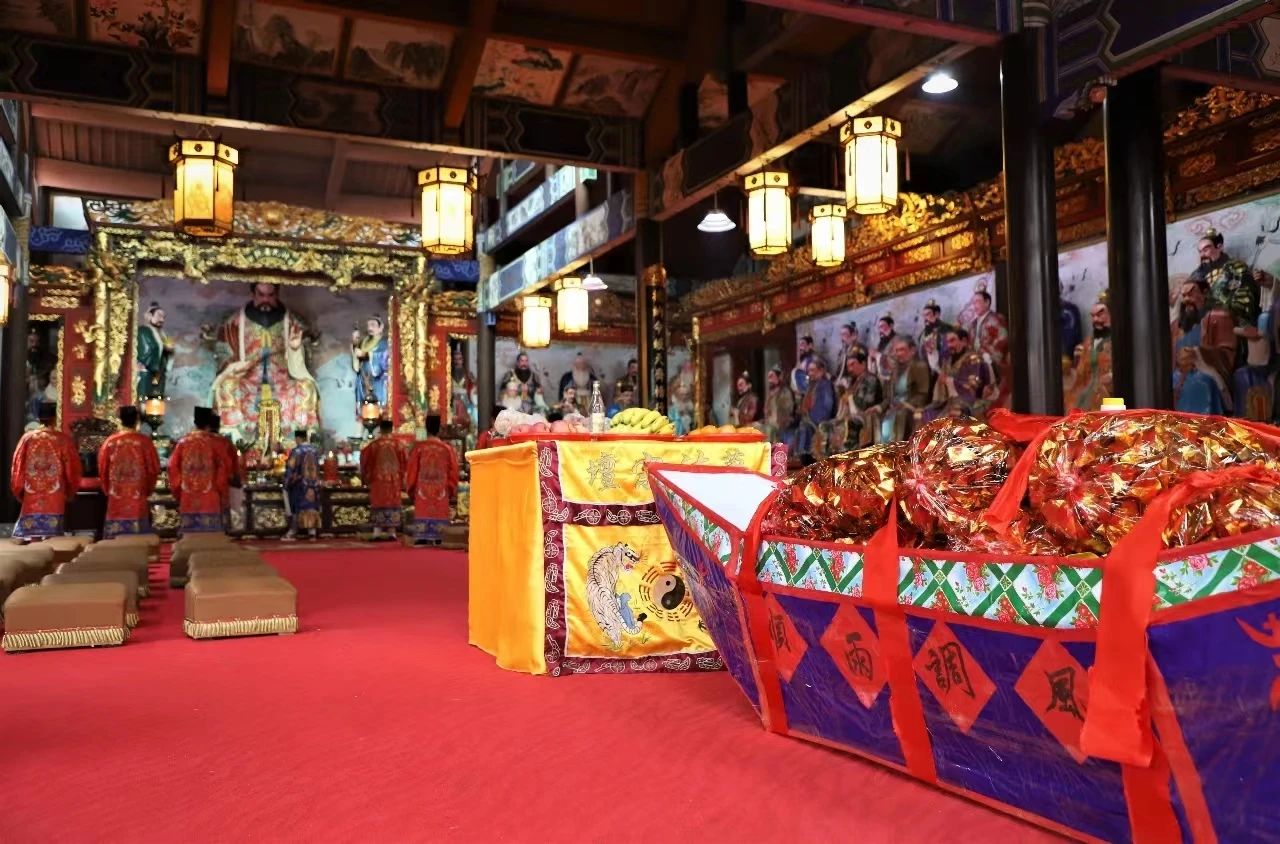
At the end of the Northern Song Dynasty, amidst societal crises, Emperor Huizong firmly believed in Taoism’s potential to rescue the nation. In the third year of Chongning (1104 AD), Huizong summoned the thirteen-year-old thirtieth generation Celestial Master, Zhang Jixian, for an audience. The following year, Zhang was again called to perform rituals in the inner court, receiving the title “Xujing Master” and gold to cast statues of Laozi and the ancestral Celestial Master. Emperor Huizong repeatedly summoned the Celestial Master, seeking elixirs for immortality and direct counsel on current affairs. Zhang Jixian often hinted at the urgent state of the nation through subtle remarks.
During the Southern Song Dynasty, the thirty-fifth Celestial Master, Zhang Keda, was highly esteemed by the emperor. In the third year of the Jiaxi era (1239 AD), Emperor Lizong conferred the title “Master of the Profound Observation” upon the thirty-fifth Celestial Master, Zhang Keda, and appointed him to oversee the talismans of the Three Mountains, in addition to managing official Taoist affairs in various imperial palaces, specifically leading the Longxiang Palace. As a result, the three major Taoist sects of Longhu Mountain, Hezhao Mountain, and Maoshan came under the Celestial Master’s administration, solidifying Zhang Keda’s role as the head of the Zhengyi sect, recognized by imperial decree.
During the Yuan and Ming Dynasties, Taoism continued to flourish. In the late Song and early Yuan periods, Kublai Khan sent an envoy, Wang Yi, to Longhu Mountain, seeking talismans from the thirty-fifth Celestial Master, Zhang Keda. The Celestial Master foretold that if he served his master well, the world would soon be unified. After Kublai Khan established the Yuan Dynasty, he summoned the thirty-eighth Celestial Master, Zhang Zongyan, granting him substantial authority over Taoism in southern China and bestowing upon him a second-class silver seal. When Emperor Wuzong ascended the throne, he summoned the thirty-eighth Celestial Master, Zhang Yucai, praising him as a learned and capable figure, granting him the title of “Grand Minister of Pure Light” and a gold seal, recognizing him with first-class status. The Yuan Dynasty’s support for the Celestial Master’s Dao was transmitted from generation to generation, reflecting the special regard the court held for them.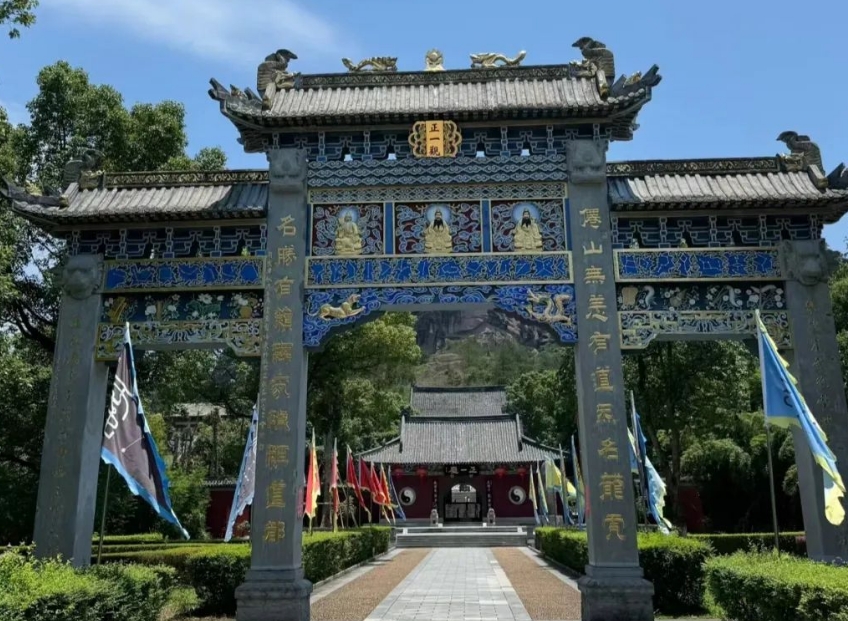
Before ascending to the throne, Zhu Yuanzhang sought out Celestial Master Zhang Zhengchang to request a “heavenly document,” aiming to create an atmosphere of divine right. However, after becoming emperor, he did not continue the Yuan emperors’ endorsement of Taoism; instead, he marginalized the title of “Celestial Master.” He questioned the forty-second Celestial Master, Zhang Zhengchang, “Is there a master in heaven?” to which Zhang had no response. Consequently, he was renamed “Grand True Man of the Zhengyi Succession,” although Zhu Yuanzhang still valued the Longhu Mountain Taoism. He appointed Zhang Zhengchang as the head of the Zhengyi sect and granted him the title of “Grand True Man of National Defense and Ancestor Expansion,” entrusting him with Taoist affairs and providing him with a silver seal, equivalent to second-class status. In the fifth year of the Hongwu era, he ordered the forty-second Celestial Master, Zhang Zhengchang, to oversee Taoism throughout the empire, gifting him fifteen taels of gold and renovating his residence.
Throughout the final two hundred years of the Ming Dynasty, the title of “Grand True Man of Zhengyi” did not elevate; the descendants often engaged in unruly behaviors, leading to punishments and demotions. After Zhu Di ascended the throne, he continued to promote the Celestial Master’s Dao. The forty-third Celestial Master, Zhang Yuchu, had his position restored after being wrongfully stripped of his title during the Jianwen era. However, during Emperor Xianzong’s reign, the forty-sixth Celestial Master, Zhang Yuanji, was known for his cruel behavior, extorting money from noble families and even killing over forty people. As a result, Xianzong stripped him of his title and appointed another family member in his place. After the forty-ninth Celestial Master, Zhang Yongxu, passed away, the court appointed a new Celestial Master with the title of “Manager of the Shangqing Palace,” granting him fifth-class rank and a bronze seal. By this time, the Longhu Mountain Zhang family, since the era of Zhang Zhengchang, had lost the ability to perform miraculous deeds and relied solely on talismans, leading to a decline in faith among the people.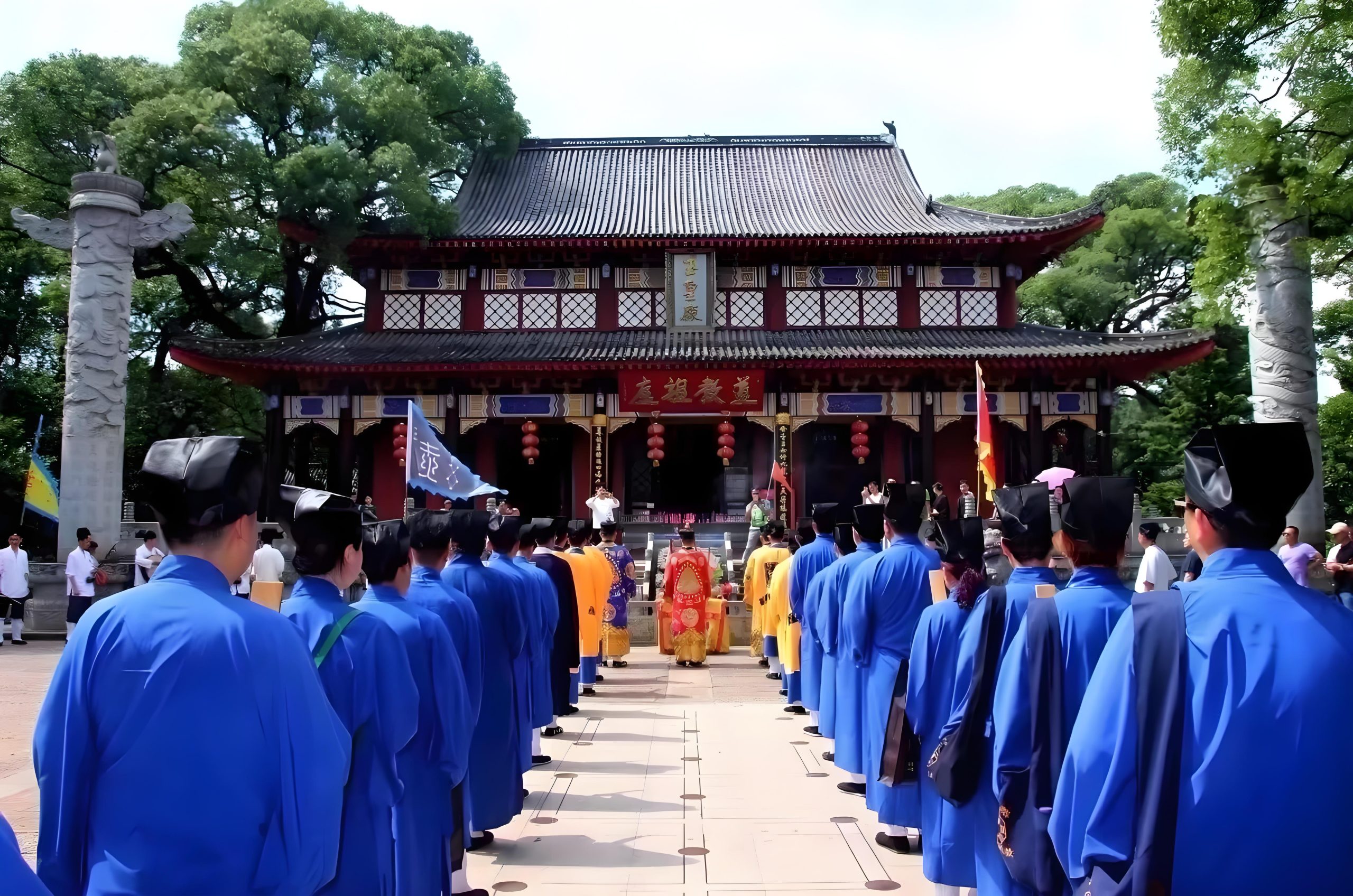
The Celestial Master’s Dao faced further neglect during the Qing Dynasty, accelerating its decline. As a Han Chinese religion, it was marginalized by Lamaist Buddhism and discriminated against by the imperial court. In the fifth year of Qianlong’s reign, the emperor ceased the ceremonial audiences for the Celestial Master, and by the seventeenth year (1752 AD), the status of the Grand True Man of Zhengyi was downgraded from second class to fifth class. The powers of the Celestial Master were restricted, allowing him only to lead the Taoist community at Longhu Mountain, eliminating his previous position as the head of Taoism in the south and the overarching authority in the empire. By the Daoguang era, the institution of the Celestial Master’s audience in court was abolished, leading to a significant decline in prestige.
In 1903 (the twenty-ninth year of Guangxu), the sixty-second Celestial Master, Zhang Yuanxu, succeeded the title. In the early years of the Republic of China, the sixty-second and sixty-third Celestial Masters sought support from warlords to change the fate of the Celestial Master’s Dao. In 1912 (the first year of the Republic), the title was abolished, but in 1915 (the fourth year), Yuan Shikai restored the title and re-issued the “Seal of the Grand True Man of Zhengyi,” along with the “Third-Class Merit Medal” and a plaque for “Daoist Contract Kongtong.” In 1920 (the ninth year), Zhang Yuanxu was elected president of the “Five Religions Association of Taoism” and engaged in Taoist activities. After the sixty-third Celestial Master, Zhang Enpu, succeeded in 1924 (the thirteenth year), the Celestial Master’s Dao faced setbacks due to peasant uprisings. In 1927 (the sixteenth year), Fang Zhimin initiated a movement against superstition, confiscating the Celestial Master’s ritual seals and swords, and detaining Zhang Enpu in Nanchang, disbanding the Taoist priests at the Celestial Master’s residence.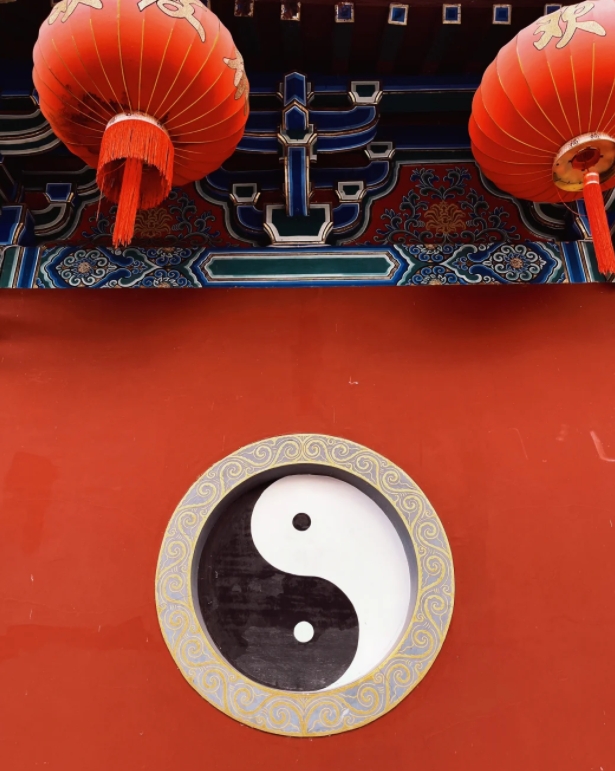
Following the “April 12” coup, the Celestial Master allied with Chiang Kai-shek, who sent people to Longhu Mountain to repair the “Celestial Master’s Residence” and “Shangqing Palace,” appointing Zhang Enpu as the acting commander of the Nationalist Party’s twenty-first army. Zhang Enpu actively organized Taoist groups in Shanghai, preparing for the establishment of the “Chinese Republic Taoist Association” in 1947. Just before the liberation in 1948, Zhang Enpu, along with his son, traveled to Taiwan, marking the end of the Celestial Master’s Dao’s over eighteen hundred years of history on the mainland, though its influence remained at Longhu Mountain.
Since the implementation of national religious policies, descendants of the Celestial Master and their followers have engaged in Taoist activities with a new approach. For instance, Zhang Jiyu, the grandson of Zhang Xiangyun, the brother of the sixty-third Celestial Master, is dedicated to the study of Chinese Taoism, while Zhang Jintao, a nephew of the Celestial Master, serves as a director of the Longhu Mountain Taoist Association, working towards the development of Taoism at Longhu Mountain.
II. Exploration of Taoist Cultural Sites at Longhu Mountain
- Celestial Master’s Residence
The Celestial Master’s Residence, officially known as the “Sihan Celestial Master’s Residence,” is also referred to as the “Great True Man’s Residence.” It is located in the Shangqing Ancient Town within the Longhu Mountain scenic area, south of the Pipa Peak, facing the Shangqing River (historically known as Yixi), with Xihua Mountain to the north, one kilometer east of the Dasha Qingguan, and approximately fifteen li west from the main peak of Longhu Mountain.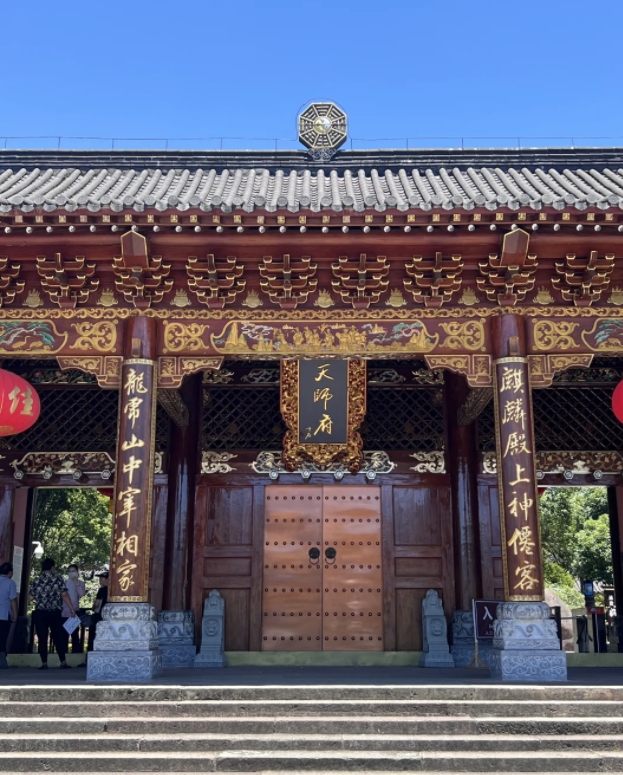
The entire residence consists of the main gate, great hall, back hall, private quarters, various temples, study rooms, and gardens. It is grand in scale, majestic, and exquisitely designed, resembling a royal palace, with an architectural layout shaped like the “Bagua,” a unique style of Taoist architecture.
Rich in historical relics, this site not only holds great value for the study of Chinese Taoism but also represents a precious heritage of ancient Chinese culture. It is one of the remaining large residences from the feudal era. The courtyard features dense camphor trees and towering ancient wood, providing a tranquil environment once known as the “Fairy Capital” and “First Family of the South.”
- Dasha Qing Palace
Dasha Qing Palace is located at the eastern edge of Shangqing Town, about one kilometer from the Sihan Celestial Master’s Residence. It is nestled between Elephant Mountain and Yixi River, surrounded by mountains and streams, making it a realm of celestial beings. According to ancient legend, this place is a gathering spot for nine dragons. A folk rhyme states: “The nine dragons gather at Shangqing Palace. The Celestial Master subdues demons with supernatural powers. Only one dragon escapes punishment, drifting downstream and encountering a fierce tiger.”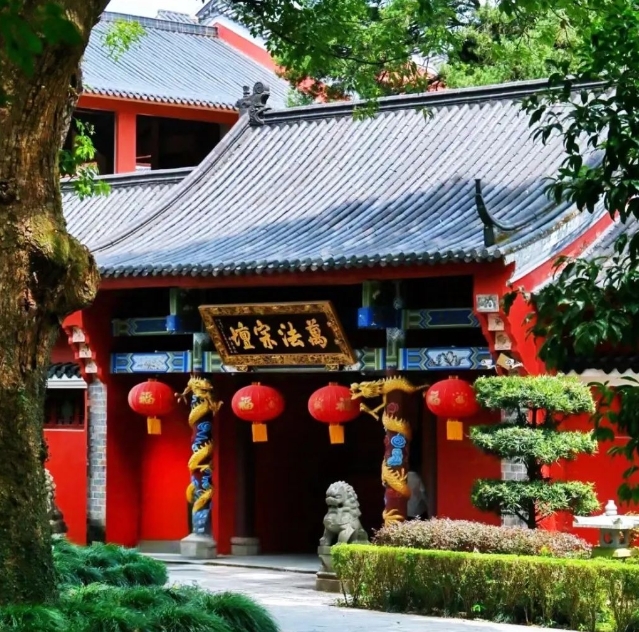
The nine dragons refer to the nearby Tianmen Mountain, Taishan, Wujian Mountain, Lion Mountain, Chongtian Peak, Yingtian Mountain, Xihua Mountain, Wugui Mountain, and Shengjing Mountain. Dasha Qing Palace not only stands as the foremost Taoist palace in Jiangnan but is also unmatched nationwide, celebrated as a “City of Celestial Beings” and a “Place of Divine Offices.”
- Elephant Mountain Academy
The academy is located within Guixi City, under the jurisdiction of Yingtan City, Jiangxi Province. It was founded in the fourteenth year of the Zhenxi era during the Southern Song Dynasty (1187 AD) and was originally called “Elephant Mountain Study.” It is one of the four major academies of the Southern Song. Its founder, Lu Jiuyuan, is revered as “Master of Elephant Mountain,” whose teachings countered the then-prominent “Cheng-Zhu School” and later became known as “Lu-Wang School of Mind.”
Thus, Elephant Mountain Academy is recognized as the birthplace of Chinese philosophical “Mind Theory.” The academy was established on the lofty and secluded Yingtian Mountain, known for its lush forests and clear springs, where Lu Jiuyuan found joy and built the study. Students gradually settled nearby, and morning drumbeats announced lectures, where teachings were imparted with ease. Over five years, thousands sought knowledge there. The renowned philosopher Zhu Xi wrote to Lu Jiuyuan, expressing his admiration: “I have heard about the merits of your endeavors at Elephant Mountain and the influx of students. I wish I could visit to admire the wonders.”
- Mosquito-Free Village
Mosquito-Free Village is located in Xijiacun, on the eastern bank of the Luxi River in the Xianshuiyan scenic area of Longhu Mountain. The village consists of about fifty households with over two hundred residents, believed to be descendants of Xujun Jun. Historically, the villagers relied on fishing and farming for their livelihood and are known for their longevity, earning them the nickname “Longevity Village.” The village is beautifully situated by mountains and rivers, with lush greenery and tranquil waters. It enjoys a mild climate, making it an ideal summer retreat. Remarkably, there are no mosquitoes here, thus it is called “Mosquito-Free Village,” offering an excellent escape from the heat. The air quality meets first-class standards, and water resources are of drinking quality.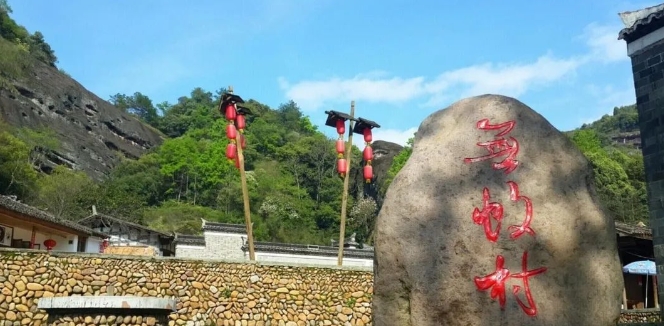
The village is home to the former residence of the renowned master Wu Changshuo, marked by a prominent inscription from his favored disciple, Wang Geyi, stating “Former Residence of Wu Changshuo.” The Changshuo Art Square in front showcases his four great artistic achievements in poetry, calligraphy, painting, and seal carving. Mosquito-Free Village consists of three scenic areas: the front area features winding streams and secluded paths, flanked by towering peaks and babbling brooks. The middle area is known for its expansive bamboo groves, often referred to as a natural “oxygen bar,” and includes a remarkable stone known as “Supporting Stone,” which is said to alleviate back pain for travelers resting against it. Visitors can enjoy springtime excursions, summer coolness, autumn hikes, and winter snow, all amidst the bamboo scenery of Mosquito-Free Village.
- Tianmen Mountain, Jinqiang Peak, and Elephant Nose Mountain
Tianmen Mountain is located 5 kilometers south of Shangqing Town, with its highest peak reaching an elevation of 1,300 meters. It features late Jurassic volcanic rock formations, characterized by steep slopes, deep valleys, bizarre rock formations, and dense forests, creating a magnificent landscape.
Jinqiang Peak, located to the east of Swan Lake, is also known as Jieshi or Chubaishi. It has an elevation of 118 meters, with a prominent column rising approximately 60 meters high.
Elephant Nose Mountain is shaped by long-term rainwater erosion and weathering, resulting in a collapsed rock archway. The peak stands about 100 meters high, with a stone beam suspended in the air, resembling a giant stone elephant drinking water. Paiya Peak stretches approximately 2 kilometers, with its highest point at 267.5 meters. This peak is composed of multiple connected mountain ridges, shaped by continuous water erosion, and runs in a narrow north-south orientation. The main peaks of Longhu Mountain from north to south include: the northernmost Sanqing Lundaofeng, the central Renjie Mengxian Peak, Liyu Peak, Zhuangyuan Peak, and Lazhu Peak, with the southernmost Dadaoqie Peak.
- Zhengyi Temple
Zhengyi Temple is structured with five main halls dedicated to the worship of Zhang Daoling, Wang Chang, and Zhao Sheng, all of whom are represented by gilded bronze statues. It features three halls on each side and three main entrance halls, along with the Yuhuang Hall (Jade Emperor Hall) located behind the main hall, and bell and drum towers on either side. Originally one of the Taoist temples at Longhu Mountain, Zhengyi Temple was initially called the “Ancestral Celestial Master Temple,” built by the fourth-generation Celestial Master Zhang Sheng to honor the teachings of the Ancestral Celestial Master upon returning to Longhu Mountain.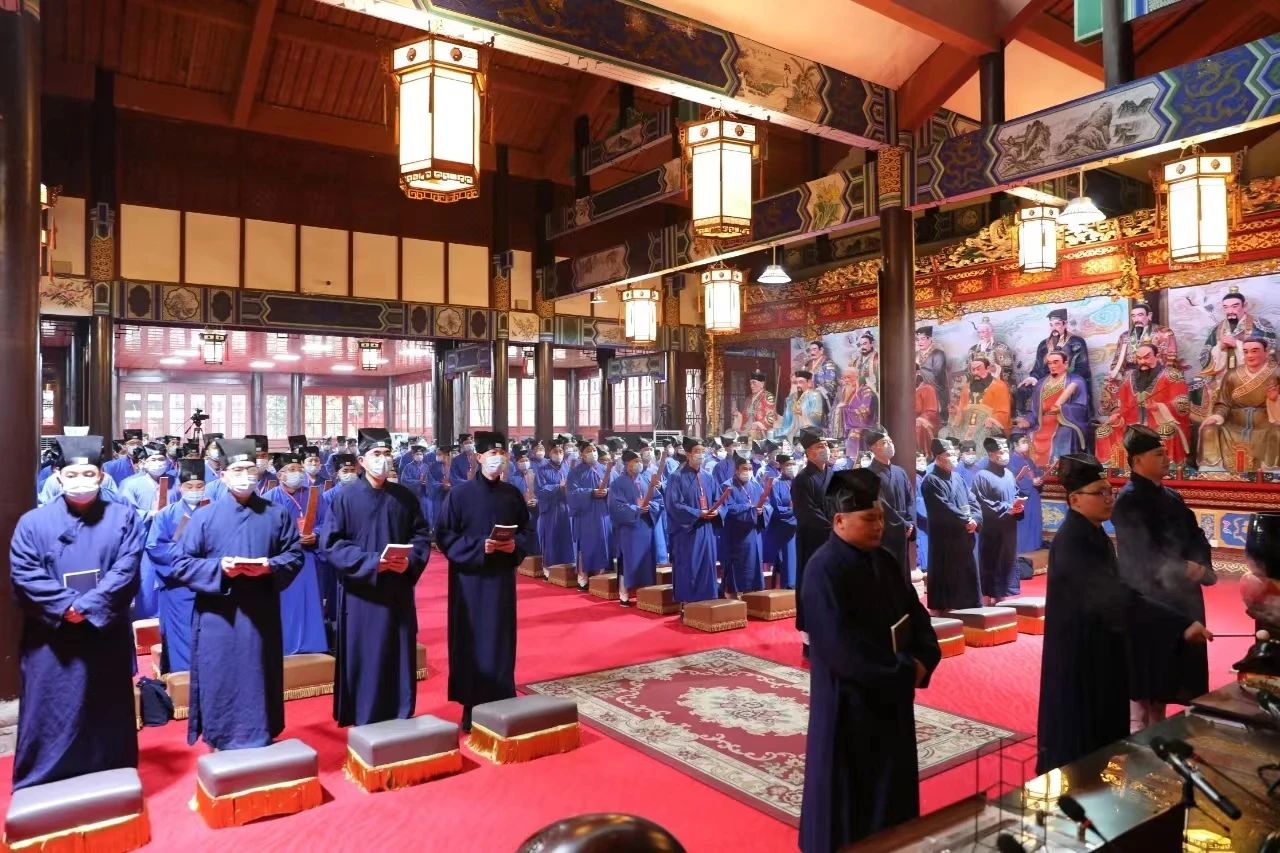
During the Song Dynasty, it was renamed Yanfa Temple, and in the Ming Dynasty, during the Jiajing period, it became known as Zhengyi Temple. The current Zhengyi Temple, reconstructed in 2000 on the site of the original temple, follows the architectural style of the Song Dynasty. Covering an area of over 60 acres, it faces east and is symmetrically aligned north-south. The temple complex includes the Seven Star Pool, main gate, ritual gate, bell and drum towers, Yuan Tan Hall, subsidiary hall, ancestral hall, Jade Emperor Hall, alchemy room, red gate, corridors, and living quarters. The entire architectural ensemble is characterized by gray tiles and white walls, embodying a simple yet elegant style with a majestic presence.
III. One-day Tour of Longhu Mountain (Practical Guide + Lightning Rod Guide)
